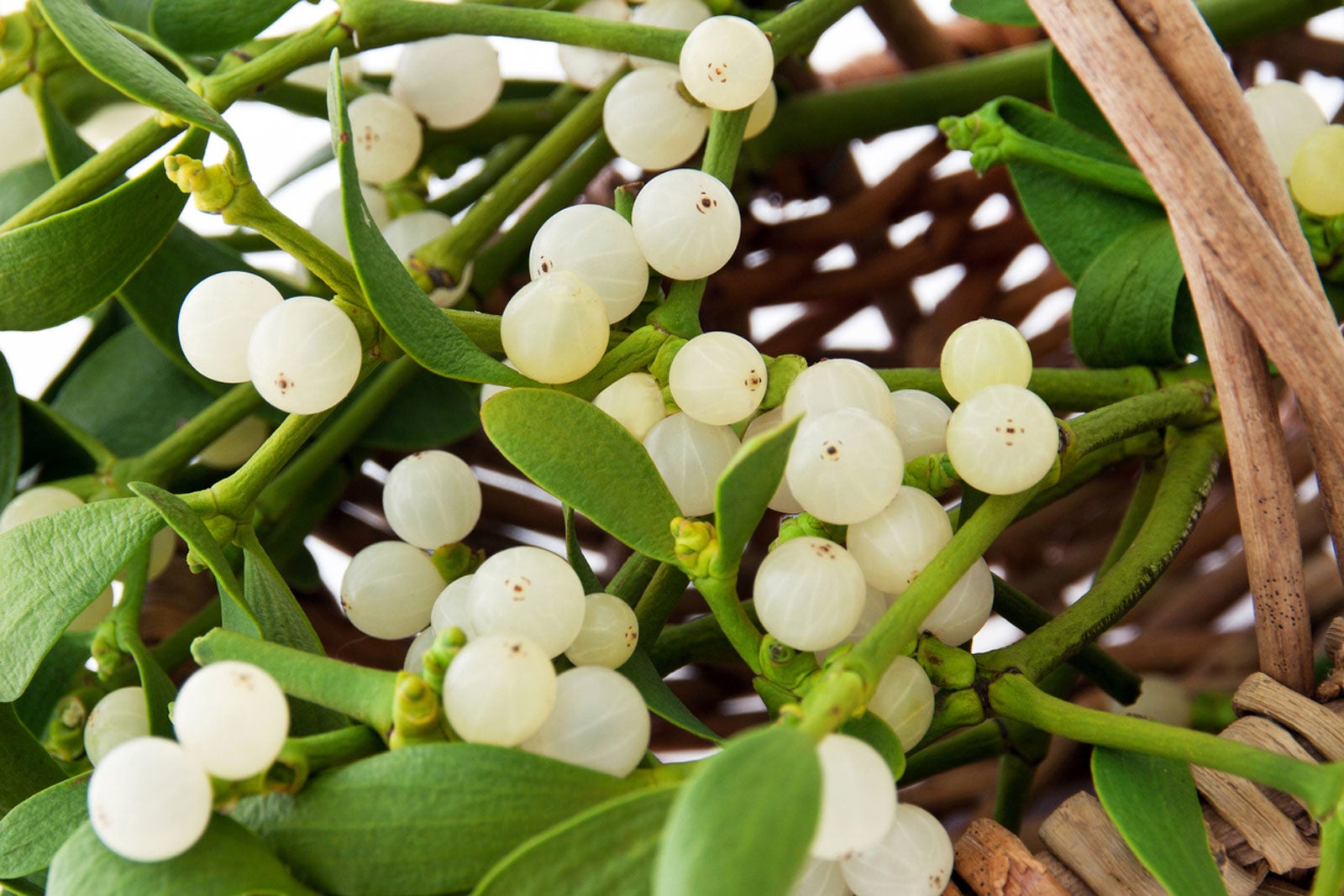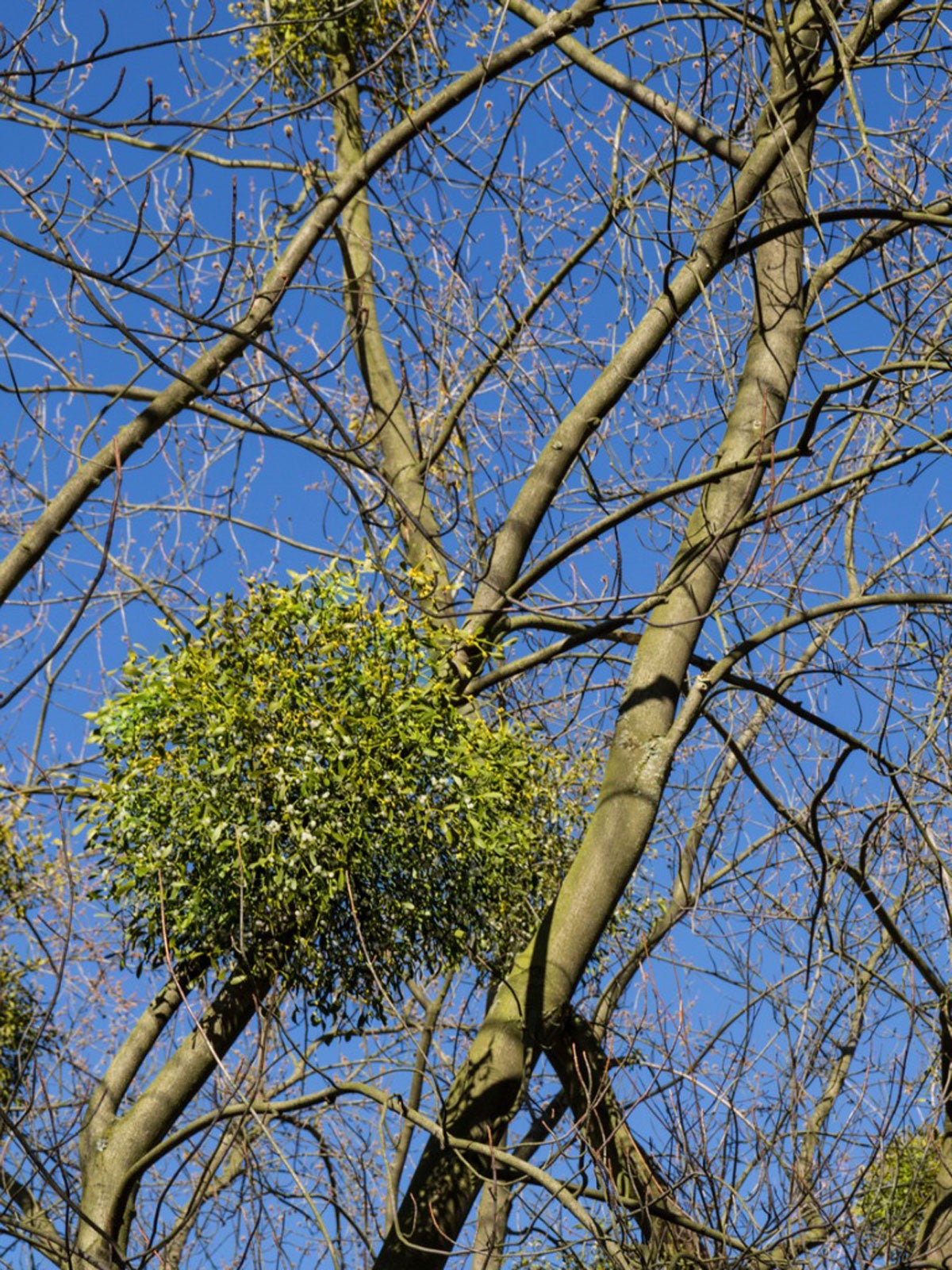Care Of Mistletoe: How To Grow Mistletoe Plants


The winter holidays wouldn't be the same without mistletoe to inspire kissing and add to the seasonal décor. The plant itself is an evergreen with numerous translucent white berries. It grows on host plants and has a definite preference for certain species. Can you grow your own mistletoe plant? You certainly can grow a mistletoe plant indoors on a small tree or outside on an established nurse plant. Find out how to grow mistletoe for your own ready supply of kissing encouragement.
Can You Grow Your Own Mistletoe Plant?
Mistletoe is a parasitic plant that lives off another tree. Its favorite hosts are apple, hawthorn, lime, poplar, and conifers. The plants bear seeds inside the berries. They are best planted when fresh and harvested between March and April. Check their preferred host trees for caches of the berries. Of course, you will also need a host plant for the seeds to germinate and grow upon. Growing a mistletoe plant indoors will require a small potted tree for the seeds to latch onto. Orchard apples are perfect for mistletoe growing and may be seeded. The parasitic nature of the plant means it will take nutrients and moisture from the host, so be cautious which plants you choose to seed.
How to Grow Mistletoe
Only use fresh berries for mistletoe growing. You will need to remove the seed from the berry. To do this, just squeeze out the seed and then rub off most of the sticky coating. Rinse the seed and then plant the seeds. In the wild, mistletoe grows on host plants but this condition is not necessary for germination. Most species of mistletoe seed needs light for germination but can also sprout in moist seed flats. Use a potting mix with generous amounts of peat in a flat. Sow several seeds and mist the medium until damp. Place a lid or plastic over the flat and place it in a well lit area with temperatures at least 60 F. (16 C.). The mistletoe will need to be moved to a host plant to grow on, but rooting can be sporadic. Ideally, you should just push the seeds into a host plant's bark and spritz them daily with water to keep them moist. Germination may take several months depending on the light, moisture and temperature conditions. Some schools of thought say you need to make a cut in the bark of the host tree and push the seeds inside, but this is not strictly necessary. No matter how you do plant, fruiting may take four to six years from germination. Make a cut in a host tree's bark for transplant. Seedlings are ready for transplant when they have several true leaves. Insert the roots into the cut bark and pack with moist moss. Keep the area misted until the seedling attaches to the host.
Care of Mistletoe
Mistletoe is not prone to damage from insects and has few disease problems. The plants are diocieous, which means each is either male or female. The slow growth rate means you won't know which you have until about year four. If you just get flowers but no berries, your plant is male. This is why it is important to plant several seeds at the same time. The care of mistletoe is minimal, but you will want to give the host plant some extra TLC as the mistletoe saps some of its energy. Apply fertilizer in spring, watch the host for pest and disease problems and keep the host tree watered. Mistletoe will take off after the fourth year and is very hardy, even to the point of becoming a nuisance. It gets all its needs from the air and the host plant. In some areas, like California, prevention and control are the issue with mistletoe, which spreads like wildfire. Ensure that you are not adding to the problem when you plant outside. If there is any concern, try growing a mistletoe plant indoors instead.
Gardening tips, videos, info and more delivered right to your inbox!
Sign up for the Gardening Know How newsletter today and receive a free copy of our e-book "How to Grow Delicious Tomatoes".

Bonnie Grant is a professional landscaper with a Certification in Urban Gardening. She has been gardening and writing for 15 years. A former professional chef, she has a passion for edible landscaping.
-
 Get Ready For A Summer Of Hummers! Grow These Full Sun Hummingbird Plants and Flowers
Get Ready For A Summer Of Hummers! Grow These Full Sun Hummingbird Plants and FlowersIf you’re lucky enough to enjoy a sunny backyard, make sure you are maxing out on your pollinator opportunities and grow these full sun hummingbird plants and flowers
By Tonya Barnett
-
 12 Lush Alternatives To A Lawn For Sustainable Spaces
12 Lush Alternatives To A Lawn For Sustainable SpacesAlternatives to a lawn are beautiful and also beneficial to your local ecosystem and its pollinators. Explore our top picks for plants to replace grass.
By Tonya Barnett
